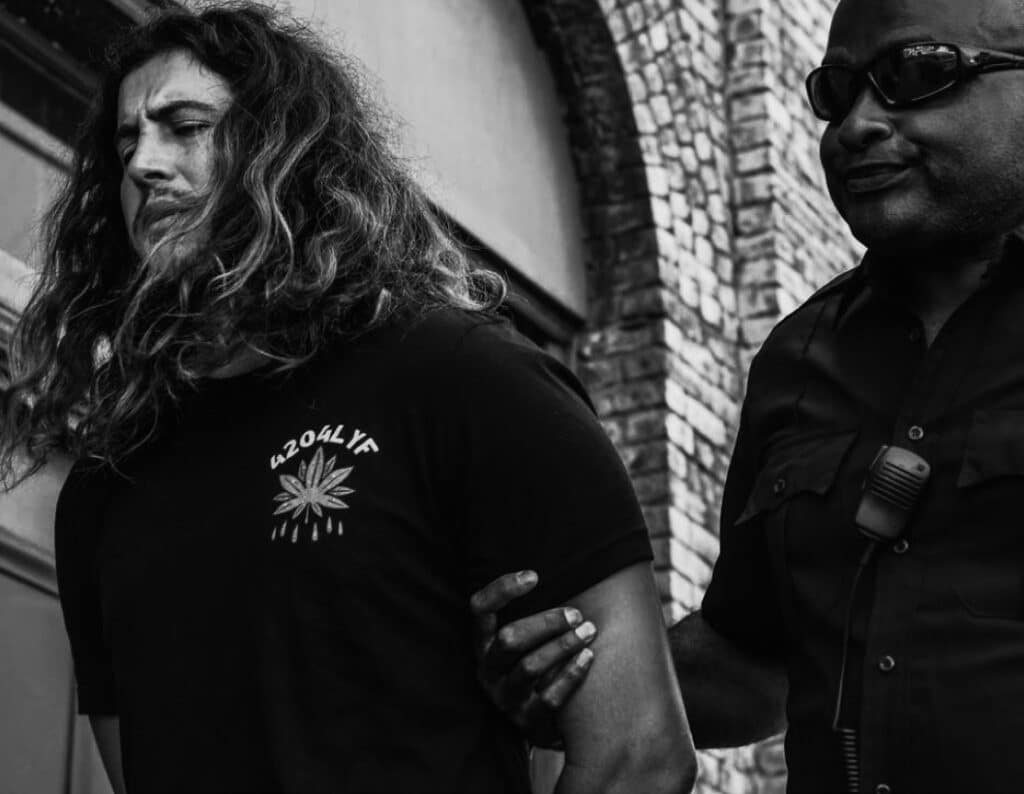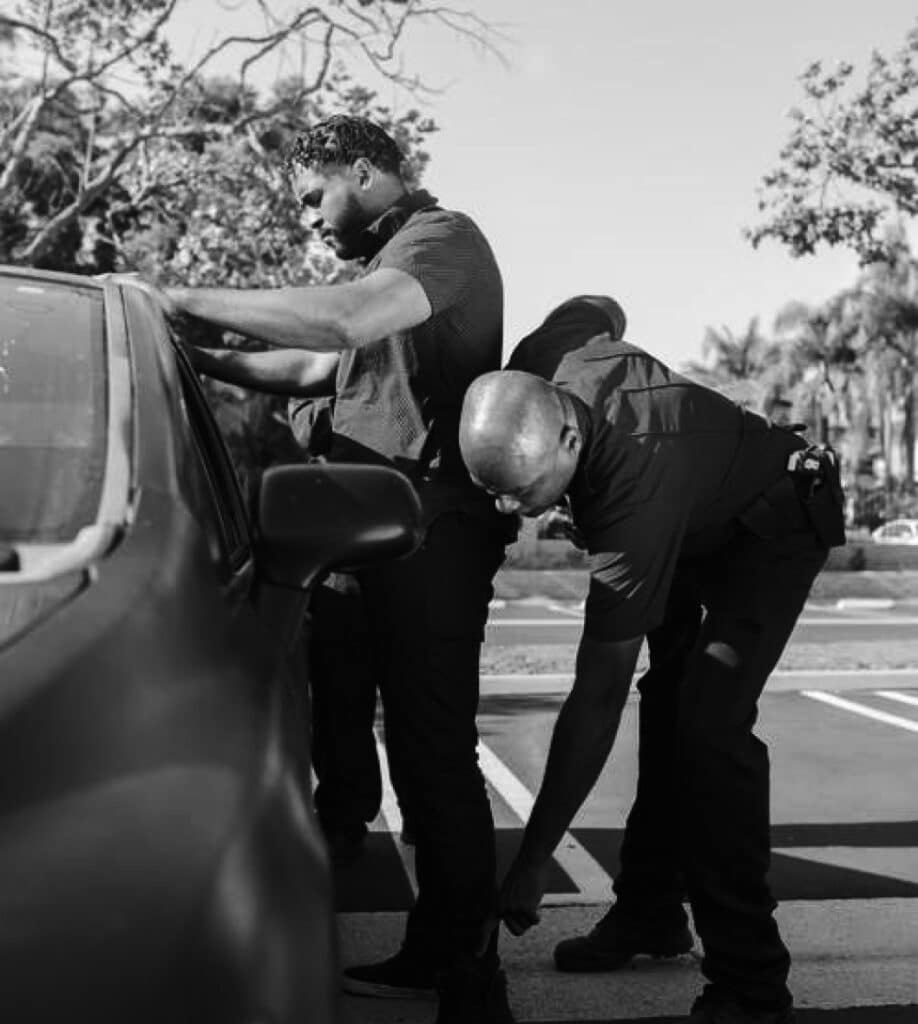Police Brutality Statistics
Were you or a loved one a victim of police brutality?
Attorneys that work with Police Brutality Center may be able to assist you.
"*" indicates required fields
Content Last Updated: March 27, 2025
The killings of Michael Brown, George Floyd, and Breonna Taylor, among many other unarmed Black men and women, have placed police violence at the center of the national conversation. This heightened awareness of wrongful police killings of civilians also exposed a disturbing deficit in the federal government’s collection of policing data.
Media groups like The Guardian, The Washington Post, and others rushed to fill this data void. By creating independent databases from local news reports and online sources, the researchers found that the federal government counted less than half of all officer-involved shooting deaths. Then-FBI director James Comey admitted that the Bureau’s shortcomings were “ridiculous” and “embarrassing.”
This article will reveal the most vital police brutality statistics on deaths from police violence by examining the most authoritative, independent data sources. It will include statistics describing the disparate impacts of police violence on communities of color. We’ll conclude with recommendations to help stop killings by police, and throughout the piece, try to answer these and other frequently asked questions about police violence.
- Are police brutality rates increasing?
- In which cities, states, and countries are police shootings most and least likely to occur?
- Which racial and ethnic groups are most impacted by police misconduct and violence?
- What happens to police officers after they kill civilians?
Note: This article primarily focuses on police-related killings rather than non-fatal police violence. That exclusion doesn’t minimize the problem of excessive police force causing severe injuries and personal trauma. It only reflects the scandalous lack of reliable data provided by local, state, and federal police agencies.

Regional Overview: Police Violence in the United States & Abroad
Despite the increased data visibility into the problem in recent years, police killings of civilians continue to occur at an astonishing rate. We’ll examine which groups of people are most likely to be killed by the police in the following section. But we’ll begin with a high-level view of the problem at the national, state, and international levels.
According to The Washington Post’s tracking database, at least 1,173 people were shot and killed by the police in 2024. Meanwhile, Mapping Police Violence, a leading police violence research project, found that police killed a minimum of 1,260 people that year. This statistic includes victims shot by police or another cause of death—such as tasers, physical restraints, or police vehicles.
The Mapping Police Violence analysis, which pulls data from the longstanding Gun Violence Archive and the Fatal Encounters database, also noted a disturbing observation. In 2024, there were only 10 days when police did not kill someone in the U.S.
Have the rates of police killings increased over the years?
Between 2017 and 2021, police killings held steady, averaging 1,000 per year. However, the rate has gone up over the past few years.
In 2022, there were nearly 1,100 police killings. In 2023 and 2024, it was closer to 1,200. That’s almost a 20 percent rise in police killings in just three years, a very concerning trend.
Which US states have the highest rates of fatal police violence?
Mapping Police Violence maintains a database of police killings and violence that it sources from news media and press reports. According to its 2024 data, the states with the highest mortality rates stemming from police violence are:
1
13.7 people killed per million by police
2
Wyoming
12.13 people killed per million by police
3
Montana
11.99 people killed per million by police
Which US states have the lowest rates of fatal police violence?
According to Mapping Police Violence data, police violence is lowest in Northeastern corridor states. The three states with the fewest incidents of police killings and violence are:
1
0.28 people killed per million by police
2
1.11 people killed per million by police
3
1.53 people killed per million by police
Which US police departments have the highest rates of fatal police violence?
Data from Mapping Police Violence covering 2013 through February 28, 2025, shows the police departments with the highest rates of violence are:
- St. Louis Metropolitan Police Department: 14.7 deaths per million
- Albuquerque Police Department: 10.3 deaths per million
- Spokane Police Department: 9.7 deaths per million
Not all states have official data collection or reporting requirements concerning police use of force. Up to half don’t, and in some states, databases aren’t publicly available or contain incomplete data. Skewed or insufficient data may cause departments to show lower rates of police violence.
Which US police departments have the lowest rates of fatal police violence?
Between 2013 and February 28, 2025, the police departments with the lowest rates of fatal police killings are:
- Irvine Police Department: 0.5 deaths per million
- Chesapeake Police Department: 0.7 deaths per million
- Arlington County Police Department: 1.0 deaths per million
So how does America’s police violence compare to that of other countries?
American police kill civilians at extraordinarily higher rates than police in other high-income democracies. According to the Prison Policy Initiative, a criminal justice think tank, in 2019, U.S. police killed 3.35 per 1 million people. Canadian police, the next highest on the list, killed 0.98 for every 1 million. And police in England and Wales rarely kill civilians, at a rate of .05 per 1 million.
In other words, police in the U.S. kill people at a rate at least three times higher than Canadian police do and at least 60 times the rate of police in England and Wales. And according to an analysis by The Guardian, U.S. police killed more people in the first 24 days of 2015 than cops in England and Wales did throughout the previous 24 years.
Who are the most common victims of police violence?
Now that we’ve looked at police brutality from a regional perspective, we’ll analyze its victims. Revisiting The Washington Post’s database, which has tracked 10,429 fatal police shootings since 2015, the data shows police brutality is a problem that affects people across demographic groups.
Although about half of the people shot and killed by police every year in the United States are white, the proportional weight of police violence hits communities of color the hardest.

So, what's the risk of being killed by police violence by race?
The Washington Post’s database breaks down the stark racial disparities for people in the United States killed by police shootings since January 1, 2015. The statistics show the following
- Police killed white people at a rate of 2.4 per million in population each year.
- Police killed Hispanic people at a rate of 2.7 per million in population each year.
- Police killed Black people at a rate of 6.1 per million in population each year.
In other words, Black Americans are more than twice as likely to be killed by the police than white people.
Furthermore, according to the 2024 Police Violence report, a product of the Mapping Police Violence team, Black Americans were not only more likely to be killed by police than other races, but they were also more likely to be unarmed and less likely to be threatening someone when killed.
Which US police department has the highest rate of deadly force against Black Americans?
Police brutality in St. Louis is particularly prevalent against the Black community. According to Mapping Police Violence, from 2013 through June 2023, the St. Louis Metropolitan Police Department killed 48 people, 41 of which were Black. That equates to an average annual rate of killings of Black people by police of 30.4 per 1 million. Moreover, Oklahoma PD officers killed Black people at 10.3 times the rate of white people.
What's the risk of being killed by police violence by age and gender?
According to The Washington Post, among the 10,429 people shot and killed by the police between 2015 and 2024, over 95 percent were male. And more than half of the victims were between 20 and 40 years old.
So overall, the profile of people killed by the police tends to be overwhelmingly male, mostly young, and disproportionately Latino and Black men.
Mental Health Risks
The 2024 Police Violence Report found that 64 percent of police killings occurred during traffic stops, police responses to mental health crises, and situations that didn’t involve the victim threatening someone with a gun. Finding ways to de-escalate these situations could greatly reduce police-related violence and deaths.

What happens to police after they kill someone?
Philip Stinson, a criminal justice expert at Bowling Green State University, maintains the most comprehensive database of officers charged with crimes. His national database contains information on 13,214 arrest cases from 2005 to 2016 involving 10,901 individual law enforcement officers.
When police kill someone, how likely are they to be prosecuted and convicted for murder?
In short, not very. According to Professor Philip Stinson, U.S. prosecutors in 2021 charged only 21 police officers with either murder or manslaughter resulting from deadly use of force. While 21 might not seem like many, it was a record-high number of officers charged.
For comparison, prosecutors in 2020 charged 16 police officers with murder or manslaughter from an on-duty deadly force incident. Twelve were charged in 2019, ten in 2018, and seven in 2017.
When police officers kill someone, how likely are they to be charged with a crime?
Based on Professor Stinson’s data on police crimes — only a tiny minority, less than 2% of officers who killed civilians in the line of duty, were charged with a crime. The vast majority of officers who killed people while on duty, 98.2%, were not charged with a crime.
When police who kill are charged with murder or manslaughter, how likely are they to be convicted?
The April 2021 murder and manslaughter conviction of Derick Chauvin, the Minneapolis police officer who killed George Floyd, was an extraordinary event. As mentioned above, it’s rare for DAs to charge officers who kill. And according to Stinson’s police crimes data, of the 155 officers prosecuted for murder or manslaughter since 2005, only about one-third resulted in a criminal conviction. One-third were acquitted in court, and another one-third of cases are still pending.

What are the leading causes of police brutality in the United States?
Various factors contribute to police violence in America. While high rates of gun ownership among Americans likely contribute to higher rates of fatal shootings by police, rates of violent crime in cities did not determine rates of killings by police. For example, the Buffalo and Newark police departments had relatively low rates of fatal police violence despite high crime rates. On the other hand, Spokane and Orlando had relatively low crime rates with higher rates of deadly police violence.
There is also a long history of police violence in the United States. White men initially created police departments to control enslaved people and Native Americans, and violence has been a part of American police forces since their inception.
Another challenging characteristic of American policing is the decentralization of agencies. According to a 2016 Department of Justice survey, at least 12,200 local law enforcement agencies and 3,000 sheriff’s offices operate independently with minimal oversight. About 90% of those agencies employ fewer than 50 officers. And nearly 50% of local departments have fewer than ten officers.
That fragmentation makes it nearly impossible to mandate consistent standards in police training, data collection, use of force policies, and accountability for officers who repeatedly use excessive force. As a result, police officers in the United States are often poorly trained to practice de-escalation in stressful situations. And when agencies fail to collect or release public records of excessive force and fatal police shootings, that contributes to a culture of unseen and unchecked officer misconduct and vicious cycles of community despair.
Recommendations to prevent police killings
These sobering numbers suggest that policing in the United States requires fundamental transformation. The frequency of police killings and the racial disparities pervading those police brutality statistics is a public health crisis that needs urgent action.
Civil rights organizations have long called for police accountability in the US. And the brutal killing of George Floyd accelerated a cultural and political revolution against unjust police violence targeting African-Americans and other people of color. If you’ve been a victim of police brutality, getting legal help to file a lawsuit can help hold police departments accountable for brutality and excessive force.
To help reduce fatal police encounters and increase public safety, Congress and all 50 states should pass police reform bills to provide the following interventions:
- Improve use of force standards, including rules mandating when law enforcement officers can and cannot use deadly force
- Collect and publish detailed data on officer arrests, use of force injuries and deaths, and racial bias data during police stops
- Ensure independent and transparent investigations into all cases of excessive force and severe misconduct to ensure that officers are held accountable for their actions
- License and track “wandering officers” to prevent agencies from hiring officers dismissed for misconduct by other agencies
- Abolish qualified immunity, which often shields officers from liability for many constitutional violations, including fatal use of force.

